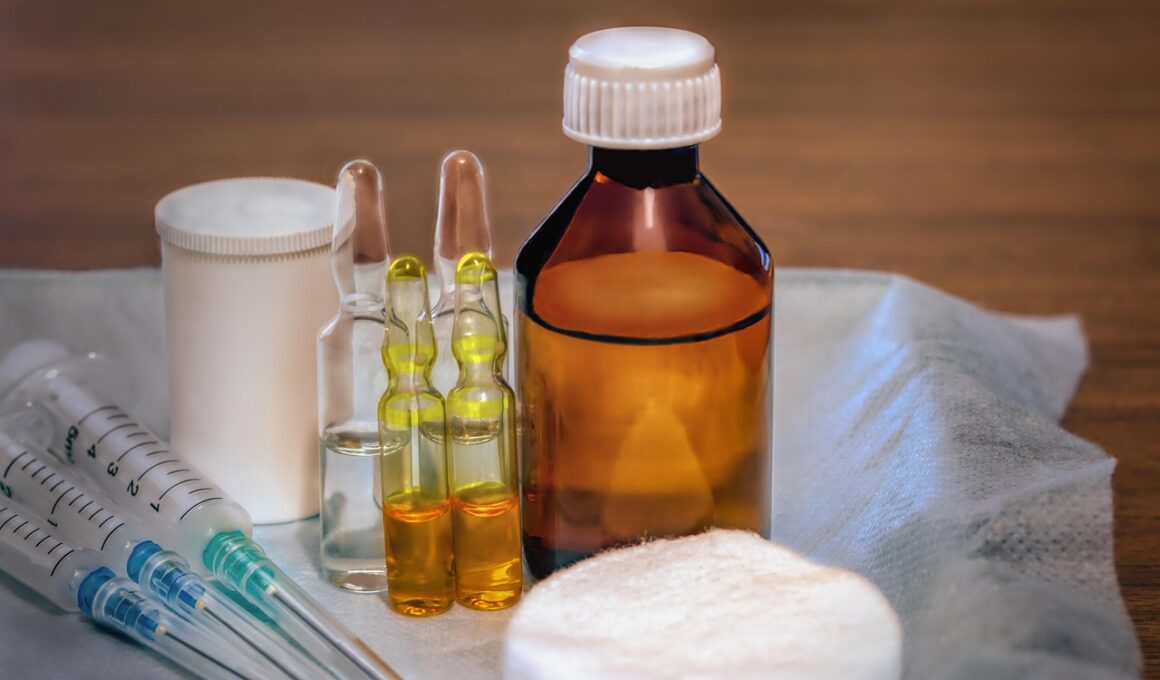Immediate First Aid Steps for Cats with Hypoglycemia
Hypoglycemia in cats is a severe condition that requires immediate attention and understanding from pet owners. It’s crucial to recognize the symptoms, which may include weakness, lethargy, irritability, and shaking. When you suspect hypoglycemia, the first step is to assess the cat’s awareness and responsiveness. If they seem drowsy or are having difficulty walking, time is of the essence. You should avoid delaying help, as hypoglycemia can lead to seizures and permanent damage if untreated. Always ensure your cat is safe and free from hazards before you act. For the best possible outcome, gathering information about your cat’s medical history can be invaluable, particularly if they have any underlying conditions. Essential background information includes whether they are insulin-dependent or have just received food. Immediate action can be taken at home, but you should always contact a veterinarian for guidance or to schedule an emergency visit. Remember, acting promptly can help minimize your cat’s risk and improve their chances of recovery from hypoglycemia. The following steps focus on recognizing and managing this situation effectively, ensuring your pet receives the help they need.
Recognizing the Signs of Hypoglycemia
When it comes to recognizing hypoglycemia in cats, being aware of the major symptoms can make a significant difference. Some of the most common signs to look for include weakness, confusion, and potential disorientation. Cats may also exhibit unsteady movements, appearing to stumble or waddle as they walk. Other signs include trembling, excessive vocalization, and unusual behavior such as aggression or hiding. In cases of severe hypoglycemia, a cat might experience seizures or even enter a coma. If you observe these symptoms, stay calm, as panic may complicate the situation. It is essential to differentiate between hypoglycemia and other issues, such as poisoning or neurological problems. The quickest way to assess your cat’s condition is through observation. Pay close attention to any episodes of collapse or unresponsiveness. Stocking a pet first aid kit at home can be useful for these emergencies. Including a glucometer can help measure their blood sugar, if equipped. Additionally, having a glucose source, such as corn syrup or honey, on hand can expedite the first aid process.
Before administering care to a cat suspected of hypoglycemia, it is wise to ensure your environment is calm. Beginning with the assessment, gently handle your cat, checking for responsiveness. If they respond slowly or not at all, monitoring their breathing and heart rate is critical. Should your cat seem alert and aware, you may suggest offering a small amount of food that is rich in carbohydrates. This can help elevate their blood sugar levels effectively. Conversely, if your cat is unconscious or minimally responsive, do not attempt to give food or water by mouth, as the risk of aspiration increases significantly. Instead, focus on keeping their head lower than their body by placing them on their side. The next essential step is to offer a fast-acting sugar solution, such as corn syrup, directly onto their gums. Using a cotton swab can gently apply the syrup, helping to ensure they can absorb it quickly. However, always consult with a veterinarian immediately for appropriate follow-up recommendations. Promptly addressing the hypoglycemic episode will significantly improve your cat’s chances of a quick recovery.
Administering Treatment Effectively
When treating a cat experiencing hypoglycemia, timing is crucial during the process. You want to ensure that immediately after you suspect hypoglycemia, you provide sugar quickly. The glucose should be high in simple sugars, and corn syrup or honey is often recommended. Carefully observe the cat while you administer it; a small amount is typically sufficient. In cases where your cat struggles to lick or swallow the syrup, gently rub the syrup along their gums to enhance absorption. After administering sugar, if the cat begins to engage more actively, you should encourage them to eat a small, balanced meal. This approach helps stabilize their blood sugar levels after the initial rapid increase. Alongside dietary measures, consider providing water to keep your cat hydrated. After stabilization, the following best step is to monitor your cat closely for the next hour or two. If symptoms persist or worsen, it’s essential to seek veterinary help immediately. Never dismiss follow-up care, as some underlying conditions might require ongoing management to prevent recurrent hypoglycemic episodes in cats.
Understanding why hypoglycemia may occur in cats can help in preventing future occurrences. One common cause is excessive insulin levels due to diabetic management. If your cat is diabetic, maintaining a balanced diet along with their insulin regimen can be essential in ensuring consistent energy levels. Stress during feeding times may also contribute, so regularly feeding your cat small, frequent meals can help prevent drastic drops in glucose levels. Additionally, monitoring your cat’s weight remains crucial; overly lean cats may have difficulty maintaining steady blood sugar levels. Pay attention to changes in activity levels or any shift in behavior, alerting you to potential issues. Keeping a close watch on feeding patterns can also signal a need for dietary adjustments. When introducing new foods, always do so gradually to assess how your cat responds. Remember, lifestyle changes should be made only after consulting your veterinarian. If diagnosed with a chronic condition, ensure planned periodic checkups to effectively manage overall health. Prevention is instrumental in maintaining your cat’s vitality and should not be underestimated in the overall care plan.
Long-Term Care and Monitoring
Once your cat has recovered from hypoglycemia, the focus should shift to long-term monitoring and care. Regular veterinary check-ups are important for any cat, particularly those with tendencies toward low blood sugar. These visits will enable your veterinarian to conduct necessary blood tests to monitor glucose levels and gain insights into your cat’s overall health. Depending on their specific needs, your vet might recommend diet adjustments or suggest medications to help manage their conditions more effectively. Keeping a detailed log of symptoms and dietary intake can help both you and your vet make informed decisions regarding preventative care. If your cat is diabetic, consider maintaining a consistent schedule for feeding and insulin administration. If you notice any signs of hypoglycemia, record them as it will assist you in identifying potential trends or triggers. Additionally, teaching yourself how to administer emergency glucose can be crucial. Emphasizing a healthy lifestyle, including hydration, physical activity, and optimal nutrition, will support their wellbeing in the long run. Being proactive about care leads to a healthier, happier feline companion.
Education is the most powerful tool in preventing and managing hypoglycemia in cats. As pet owners, your responsibility extends to understanding the medical needs of your furry friends. By equipping yourself with knowledge about symptoms, treatment procedures, and long-term care strategies, you can ensure your cat receives the best possible support. Joining local pet clubs or forums can also provide access to additional resources and shared experiences that keep you informed. Consider consulting kitty first aid classes for hands-on learning and practice. Such classes often offer essential techniques and knowledge in a supportive environment. Moreover, always keep updated with any new research or recommendations regarding feline health. The internet is full of resources, but verify information through credible sources. Familiarize yourself with emergency veterinary contacts, ensuring you know where to turn in case an emergency arises. You might also want to have an emergency preparedness kit ready to go, including essential supplies for immediate first aid. Committing to ongoing education will not only benefit your cat but also enhance your relationship with them, ensuring they enjoy a healthy lifestyle.


